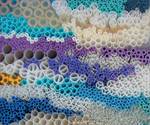Extrusion Firms Combine on Novel Catheter Shafts
Adam Spence and Microspec combine to offer catheter shafts that are more efficiently produced and mechanically sound
Two medical extrusion innovators are combining technologies in a move that will reportedly enable catheters to be produced more efficiently and with greater mechanical integrity.
The agreement between Adam Spence, Wall, N.J., a leading manufacturer of reinforced catheter shafts for vascular technologies; and Microspec Corp., Peterborough, N.H., permits Adam Spence to supply reinforced catheter shafts with Microspec’s proprietary multi-durometer extrusions.
"This partnership...bodes well for customers seeking to enhance performance while lowering costs,” says Steve Maxson, v.p. marketing and sales at Adam Spence
The most common method of constructing a catheter shaft—for example, one with four different discrete length sections of varying durometers— ‚Äã‚Äã‚Äã‚Äã‚Äã‚Äãconsists of laminating the four tubing sections together over the braided shaft in a re-flow process. For instance, 35D and 40D soft TPE tubing (such as Pebax) would be used for the distal segment, and stiffer 55D and 72D TPE tubing for the proximal segment.
Microspec’s inline multi-durometer extrusion technology, however, “allows two alternating durometer sections to be joined continuously during the extrusion process ensuring gradual transition from one durometer to another,” explains Timothy Steele, Microspec founder and CEO. “The length of each section can be programed into the extrusion process per product specification”.
The combined distal and the combined proximal sections are then laminated together reducing the number of bond joints from three to one. “This process will increase productivity, reduce overall costs and improve the mechanically integrity of the catheter shaft”, notes William Li, senior catheter engineer at Adam Spence.
Related Content
-
A Processor's Guide to Making World-Class Multilumen Tubing
Process innovation is pushing catheter design to the limit. Here are Lubrizol’s tricks of the trade.
-
Extrusion Excellence: This Year's Top Stories
Revisit the year’s most popular articles on extrusion technology and processes, showcasing innovations, best practices, and the trends that captured the plastics processing community’s attention.
-
How to Decrease the Extrudate Temperature in Single-Screw Extruders
In many cases, decreasing the discharge temperature will improve product quality and perhaps even boost rate. Here are ways to do it.





